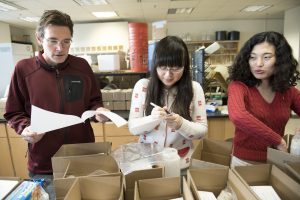
Pan Ji, MS ’11, says she once believed that engineers needed to be “emotionally unattached and isolated from the public.” After preparing sampling kits and processing water samples from hundreds of Flint, Michigan, homes, however, her perspective has changed.
“When I read the lead concentration from a certain home, it’s no longer simple numbers above or below the Environmental Protection Agency’s action level,” says Ji, a PhD candidate in environmental engineering at Virginia Tech and a lab team member of its Flint Water Study team.
The team is one of the groups that sounded the alarm about Flint’s lead contamination. For Ji, the transforming moment came when she met Flint resident Lee-Anne Walters and her young sons after testing 30 samples from Walters’ home. All the samples had lead concentration above 200 parts per billion, with the highest at 13,200 ppb.
“By contrast, the EPA’s action level for lead in water is 15 ppb, and any concentration above 5,000 ppb in water can classify it as a hazardous waste,” says Ji. “When I met the Walters, I saw how the research I am involved in is helping people. True concern for the public is the only way to guide engineers to do the right thing.”
Over the past year, Ji has worked with the Flint Water Study team to conduct several rounds of follow-up testing. In July, the team announced that lead and iron levels have decreased in Flint—but that residents should continue to use lead filters or bottled water until further notice from the state or the EPA.
Ji continues her work in the lab of Marc Edwards, who visited Johns Hopkins University in the fall to deliver the Charles and Mary O’Melia Lecture in Environmental Science.




